第49章
The wide divergencies which their inherited mental constitution creates in men's modes of feeling and thinking at once come into prominence when, which rarely happens, circumstances gather together in the same crowd and in fairly equal proportions individuals of different nationality, and this occurs, however identical in appearance be the interests which provoked the gathering.The efforts made by the socialists to assemble in great congresses the representatives of the working-class populations of different countries, have always ended in the most pronounced discord.A Latin crowd, however revolutionary or however conservative it be supposed, will invariably appeal to the intervention of the State to realise its demands.It is always distinguished by a marked tendency towards centralisation and by a leaning, more or less pronounced, in favour of a dictatorship.An English or an American crowd, on the contrary, sets no store on the State, and only appeals to private initiative.A French crowd lays particular weight on equality and an English crowd on liberty.These differences of race explain how it is that there are almost as many different forms of socialism and democracy as there are nations.
The genius of the race, then, exerts a paramount influence upon the dispositions of a crowd.It is the powerful underlying force that limits its changes of humour.It should be considered as an essential law that THE INFERIOR CHARACTERISTICS OF CROWDS ARE THELESS ACCENTUATED IN PROPORTION AS THE SPIRIT OF THE RACE ISSTRONG.The crowd state and the domination of crowds is equivalent to the barbarian state, or to a return to it.It is by the acquisition of a solidly constituted collective spirit that the race frees itself to a greater and greater extent from the unreflecting power of crowds, and emerges from the barbarian state.The only important classification to be made of heterogeneous crowds, apart from that based on racial considerations, is to separate them into anonymous crowds, such as street crowds, and crowds not anonymous--deliberative assemblies and juries, for example.The sentiment of responsibility absent from crowds of the first description and developed in those of the second often gives a very different tendency to their respective acts.
2.HOMOGENEOUS CROWDS
Homogeneous crowds include: 1.Sects; 2.Castes; 3.Classes.
The SECT represents the first step in the process of organisation of homogeneous crowds.A sect includes individuals differing greatly as to their education, their professions, and the class of society to which they belong, and with their common beliefs as the connecting link.Examples in point are religious and political sects.
The CASTE represents the highest degree of organisation of which the crowd is susceptible.While the sect includes individuals of very different professions, degrees of education and social surrounding, who are only linked together by the beliefs they hold in common, the caste is composed of individuals of the same profession, and in consequence similarly educated and of much the same social status.Examples in point are the military and priestly castes.
The CLASS is formed of individuals of diverse origin, linked together not by a community of beliefs, as are the members of a sect, or by common professional occupations, as are the members of a caste, but by certain interests and certain habits of life and education almost identical.The middle class and the agricultural class are examples.
Being only concerned in this work with heterogeneous crowds, and reserving the study of homogeneous crowds (sects, castes, and classes) for another volume, I shall not insist here on the characteristics of crowds of this latter kind.I shall conclude this study of heterogeneous crowds by the examination of a few typical and distinct categories of crowds.